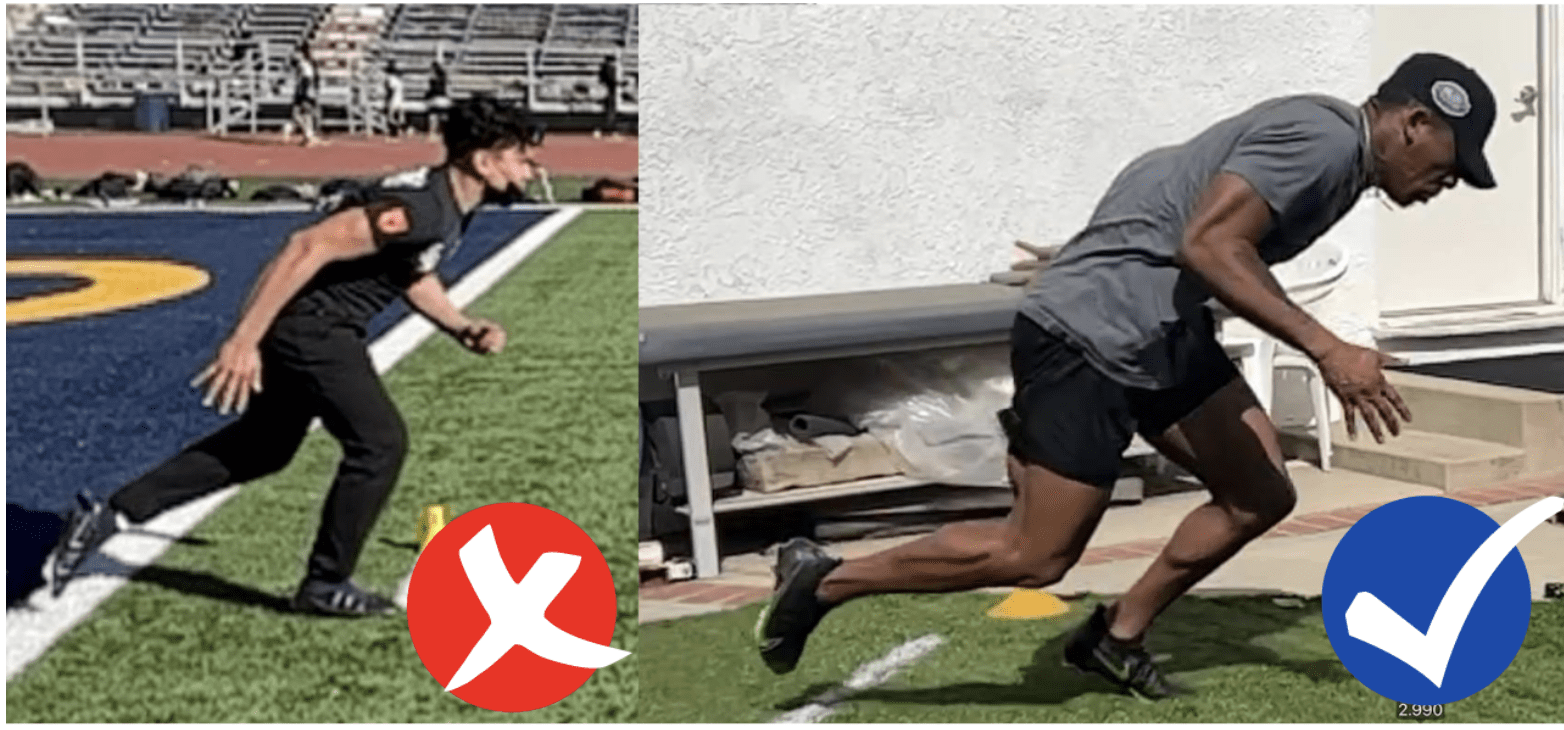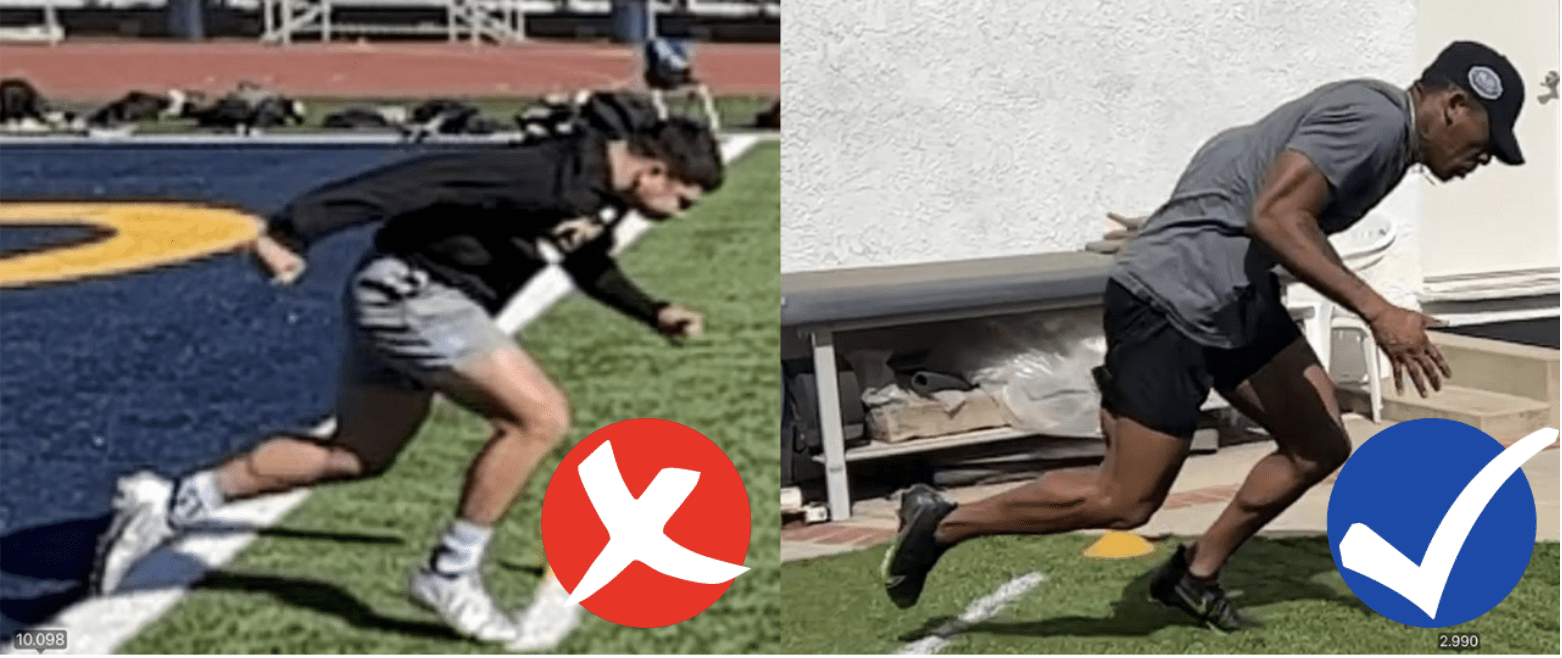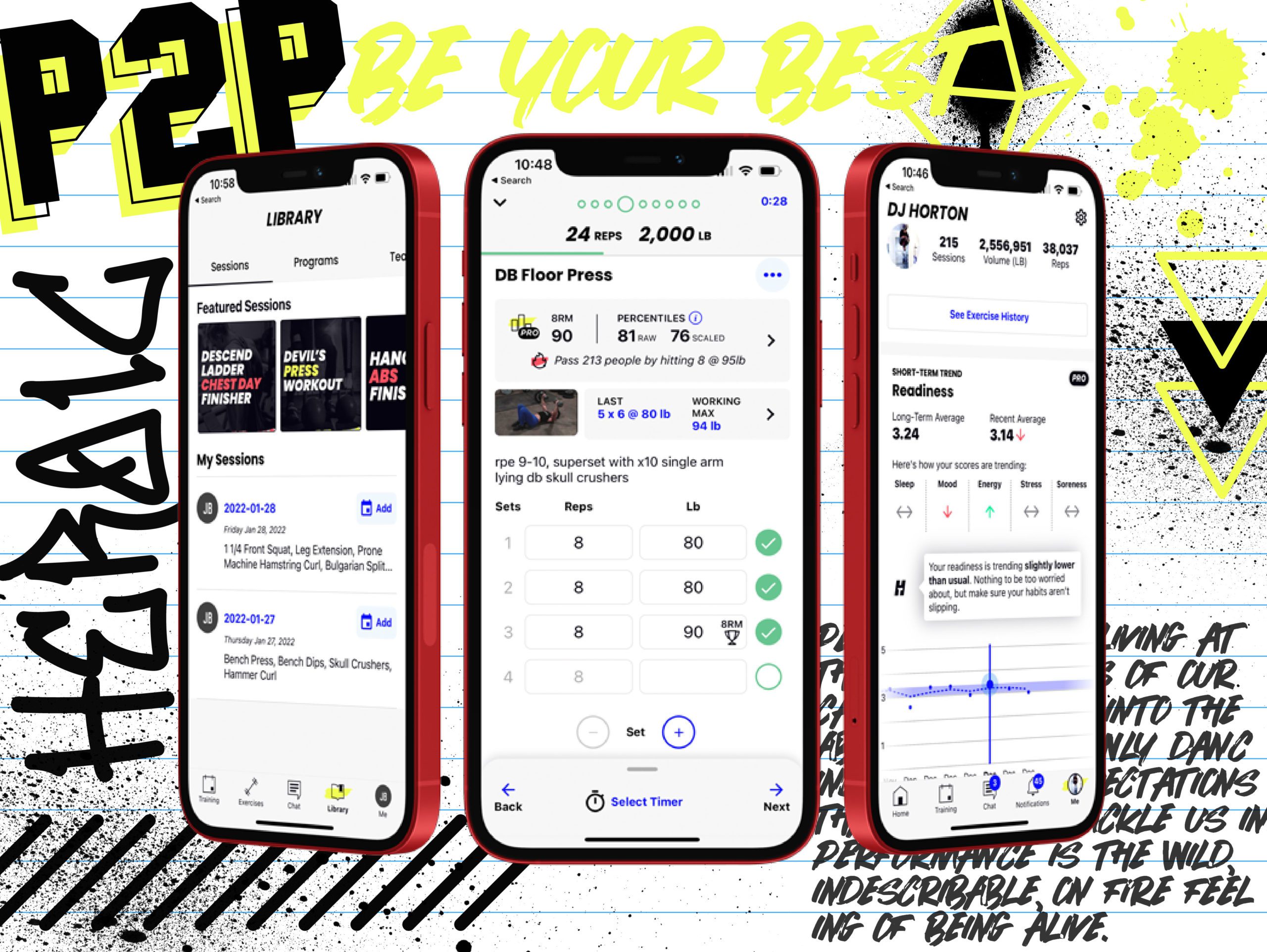The Secret to Sprinting Faster: Work on Your Start

Morey Croson, the head speed coach and founder of The Performance Lab of California, explains how you can be the quickest off the line by focusing on the position of your feet and hips as you take off.

Improve Your Sprinting Technique
Developing an explosive start takes consistent, deliberate practice. At first, you’ll likely see immediate improvement (similar to when you start benching or squatting for the first time), but if you want to keep seeing long-term improvement, you’ll need to continuously work on your starting technique.
Start Off On The Right Foot
The first thing to focus on is getting your first step to the ground as quickly as possible. I often see athletes overreaching or leaping too vertical in their first step. While you might get a little more distance doing this, it increases contact time with the ground and negatively impacts turnover of your legs.
The goal of the start is to initiate as fast of a turnover rate as possible. From there, you’ll be able to build the length per step or “open up” your stride.
The position of your foot when landing on your first step is extremely important. Similarly to the quickness of your legs, you want to spend as little contact time with the ground as possible. Notice the difference between the two athletes in the picture below.

The athlete on the left comes up more vertically with his striking foot almost flat on the ground. The athlete on the right stays more horizontal (parallel to the ground), increasing his ability to gain acceleration in the drive phase so he can take off on the ball of his foot.
Your first step usually takes the longest (about .18 seconds for the best sprinters), but that number should go down (to about .14) for the second step. This is because your body gains speed through acceleration.
By the 5th-7th step, your cadence should be at or below .1 of a second. For this to happen, your foot needs to strike the ground underneath your hip and your heel needs to face upward to the sky. This means there is adequate horizontal force to be able to pick up more distance per step.
In the image below, see how the athlete on the right has his foot positioned directly under his hip, unlike the athlete on the left. The athlete on the right will be able to reach max speed before the athlete on the left because he’ll be able to get his legs cycling faster.

You Work too Hard to Not See Progress
Find Your Perfect Training Plan
Options for Every Goal
Training plans from real coaches covering any goal, fitness level, and number of sessions per week.
The Best Coaches
Get coached by the best. Olympians, ex-NFL stars, Titan Games Winners, Sport Scientists and more.
Starting at $1/ day
With many options including a free 7 day trial, you can try out programming before you commit.
Don’t Make These Common Mistakes
Distance per step is important — the best way to improve both distance and top speed is to improve how your foot is hitting the ground at the start instead of trying to reach.
A common mistake I see many athletes make in their starting position is lifting their back foot too high behind them. During the start, it’s important to keep your feet close to the ground, especially after push off. From there, you need to drive the leg forward and then quickly strike back down underneath you. When the movement is too vertical from the start, you’re bringing the foot too far behind.

Level Up Your Training
With TrainHeroic’s immersive training app
TrainHeroic does everything you wish your old gym notebook could do.
Take the guesswork out of training with built-in exercise instruction and basic training programs. Compete against yourself and others. Track your performance and readiness. Smash your goals.

Your chest does not need to stay down when starting. Instead, focus on your hips coming forward. To accomplish this, your spine must be in an upright position. But remember, just because your spine is upright does not mean your chin or head needs to pop up.
Your arms should be strong in extension or pulling back. This is important throughout the duration of your sprint, but it must be initiated from the start. Your arms can be a little longer at the start, but once you get to top speed they’ll need to be short and quick (which is opposite to the leg cycle). Your legs, on the other hand, should be short and quick at the start, focusing on turnover. Once you reach top speed, your legs should be long, fast, and forceful.

For a more in-depth look at how to improve your drive phase after the start, check out this video analyzing some of the world’s best sprinters:
Want Training Tips, Exercise Guides & Knowledge Bombs Sent to Your Inbox?
Sign up for the FitNerd newsletter from TrainHeroic
Related articles
32 & Lifting: Reflections on My First Powerlifting Competition
Stepping onto the powerlifting platform at 32, just 13 months post-ACL surgery, Fred Ormerod chronicles his return to competitive sports after a 14-year hiatus. From shedding over 15kg to meet weight class requirements to confronting self-doubt and embracing the...
Active Recovery Strategies for Strength Athletes
Active recovery isn’t just about taking it easy—it’s a smart way to keep your body moving, boost circulation, and enhance performance without adding fatigue. While passive recovery has its place, low-intensity movement between sessions helps reduce stiffness and...
Intermittent Fasting for Shift-Working Athletes
Shift work can make fueling for performance feel like a constant battle. Between erratic schedules, disrupted sleep, and unpredictable training windows, sticking to a nutrition plan can be tough. Intermittent fasting (IF) offers a flexible approach that may already...

Join the community
Sign up for the latest training news and updates from TrainHeroic

About TrainHeroic
Support
Made with love, sweat, protein isolate and hard work in Denver, CO
© 2021 TrainHeroic, Inc. All rights reserved.






